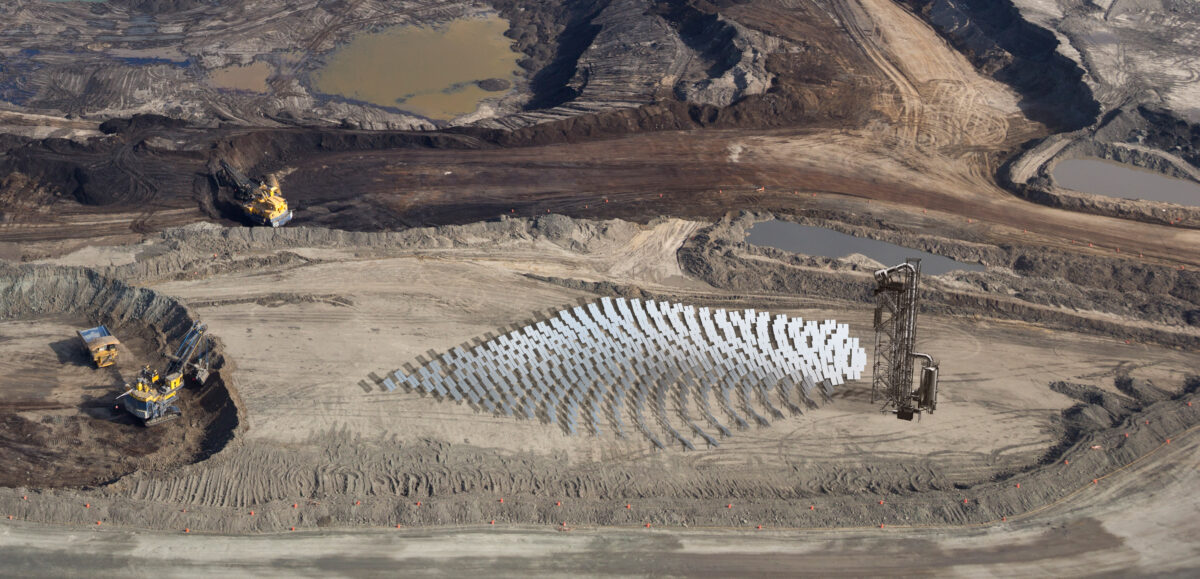CSP is experiencing a remarkable resurgence and India unveiled a 50% allocation for CSP in its renewable energy tender for the first quarter of 2024.

Scaling up CSP will bridge the gap caused by intermittent-generation PV and wind projects to help power the world’s most populous country with reliable, affordable, continuous renewable energy.
Rajan Varshney, deputy managing director of the National Thermal Power Corporation, India’s largest state-owned utility company said recently, “Now is the right time for CSP … As PV and wind capacity increases, increasingly more and more coal-based power will be required to make it firm and to supply electricity when the sun is not there. So by increasing PV, we cannot avoid coal unless we install CSP plus storage in Gujarat and Rajasthan.”
CSP’s resurgence may surprise industry insiders who consider the technology obsolete after problems with large scale sites, notably in California and Arizona.
While previous installations were massive, complex, custom-engineered, and not replicable, my company, 247Solar, has obtained finance for a modular version that solves for these challenges.
Our version operates on superheated air at normal atmospheric pressure. It stores energy using simple materials, not molten salt, and it can be mass-produced in 400 kW units for economies of scale.
The model shows promise to greatly shorten project cycles and resume the dramatic CSP cost reductions achieved in its early years and which slowed as the older technology matured.
Demand
Around-the-clock power demand has been rising because of growth in emerging economies and is accelerating due to data centers, cryptocurrency, and artificial intelligence (AI). As we move to electrify with electric vehicles, heat pumps, and industrial heat, CSP emerges as a viable solution to address those needs and provide continuous power.
Grid operators continue to grapple with the variability of photovoltaic and wind energy. Wind, if it blows at night, can help balance daytime solar but wind is much more variable than sunshine and requires long-distance, high-voltage lines to get to market, which can add cost and time to wind farm deployment.
Even large doses of lithium-ion batteries – meant to handle morning and evening peak loads, as gas peaker plants did before them – are nowhere near enough to store the energy it would take to keep the grid powered through the night and during bad weather, as coal plants have. Batteries may also feature conflict minerals, unlike our thermal energy storage systems.
CSP’s levelized cost of energy (LCOE) has fallen dramatically, by almost 70% since 2010, offering longer and more economical energy storage than batteries.
Concentrated solar has returned to projects that will pair it with PV to extend power output into the night, reducing overall LCOE by harnessing synergies between the two technologies.
Pioneers
Some of the high-profile early efforts at CSP got many things right, such as Abengoa Solar’s Solana plant near Phoenix, launched in 2013, or BrightSource’s Ivanpah plant in California, the world's largest solar thermal site at the time, also in 2013.
Initial CSP plants focused the sun’s heat on a single point, reaching temperatures above 530 degrees Celsius. Our system pushes that limit to around 1,000 degrees Celsius.
Those pioneer sites also stored energy for six- to 12-hour operation at night, aiming for more straightforward, cost-effective technology than polysilicon-based PV modules.
CSP is no longer just huge installations of pipes and mirrors in the desert or towers as high as a wind turbine, however.
We are seeing new interest in 247Solar’s smaller, simpler, more flexible application of this technology.
Our turbines generate electricity from nothing more than superheated air so they don’t require a phase change of the energy from heat to steam as other CSP systems do.
Sustainable
We store the extra heat in cheap, inert materials such as sand, iron slag, or ceramic pellets. This eliminates the need for corrosive, high-maintenance molten salt, along with its other chemical and physical challenges.
Our proprietary thermal batteries provide 18-plus hours of storage for on-demand, industrial-grade heat and electricity. They can produce power during bad weather and, when fully discharged, the generators can even run on green hydrogen, natural gas, or diesel. With a capacity factor of 85%, however, that would occur far less often than in a system of PV plus batteries with a 40% capacity factor.
Our turnkey solution, which we call 247Solar Plants™, is modular and factory-built for rapid cost reduction through mass production and easy, quick, on-site assembly.
Each module has 400 kW of generation capacity with 120-foot towers – half the height of earlier versions of CSP. With fewer moving parts than conventional CSP, our solar thermal power plant is also easier to maintain in a hostile environment.
We hold more than 30 patents worldwide, including a blanket patent just obtained in India, for our entire CSP system; as well as our proprietary solar collectors; ultra-efficient Heat2Power turbines, that use ambient air pressure; and inexpensive thermal battery systems.
Hybrid
This hybrid approach leverages the strengths of CSP and photovoltaics to generate uninterrupted power 24/7, with PV providing cheap electricity during the day while CSP stores its excess energy as heat for use at night.
Other companies, such as Heliogen, BrightSource Energy, and Acciona, are also pushing the boundaries of CSP with advancements in AI-enabled systems, alternatives to the shortcomings of molten salt storage, and lower-cost parabolic trough technology.
Potential applications for CSP include on- or off-grid combined heat and power, microgrids, ultra-heat for heavy industry, green hydrogen, and green desalination, as well as baseload power 24/7/365 – critical in fast-growing economies such as India’s.
“Emerging technologies such as solar thermal and concentrated solar power are essential for India to meet its renewable energy targets,” said India’s New & Renewable Energy Secretary Bhupinder Singh Bhalla, at the opening of the International Conference on Solar Thermal Technologies in New Delhi, in February 2024.
CSP is unmatched, especially when integrated with photovoltaics, for 24/7 dispatchability of flexible, dependable, and resilient zero-carbon power to meet the energy demands of tomorrow.
About the author: Bruce Anderson, a visionary in the solar industry for four decades, is founder and chief executive officer of 247Solar, which is commercializing a concentrating solar technology invented at MIT and which runs on superheated compressed air instead of steam. His career spans seven company ventures, a “New York Times” bestseller, and the American Solar Energy Society’s Lifetime Solar Contribution Award.
The views and opinions expressed in this article are the author’s own, and do not necessarily reflect those held by pv magazine.
This content is protected by copyright and may not be reused. If you want to cooperate with us and would like to reuse some of our content, please contact: editors@pv-magazine.com.



CSP anyhow in China is well alive and here they built and are building a lot csp installations.
It’s good 247 is there as the big ones only can be built in very remote areas while 247 can be very helpful for many industries to be energy in dependant.
Great initiative
CAP + PV is also unmatched at not working at all when it’s cloudy. But it’s pretty awesome for the southwest where it’s sunny everyday. Glad to hear it’s staying competitive.